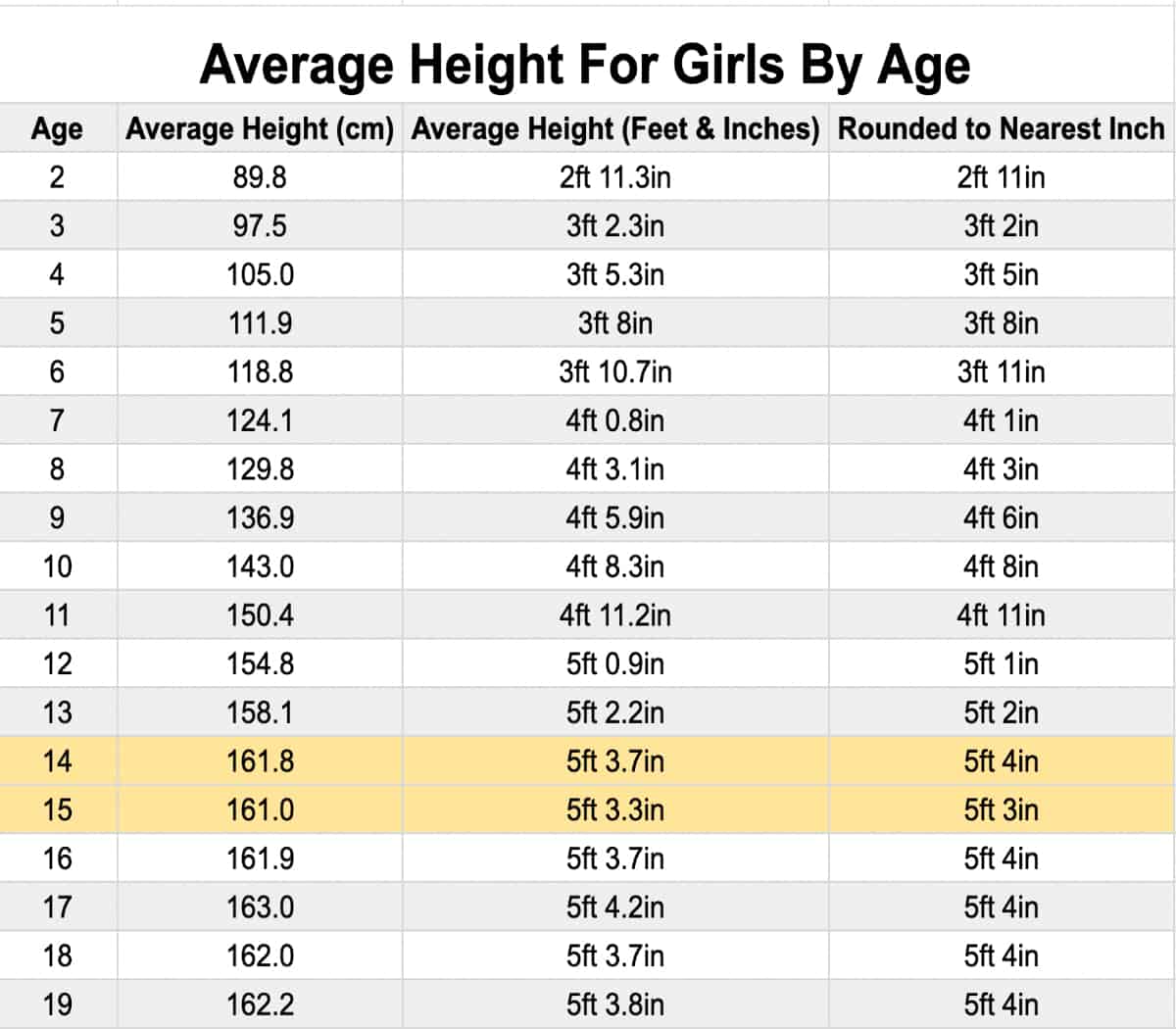Average Height In The USA: The Truth Behind The Numbers
Have you ever wondered how tall the average American is? If you're curious about the USA average height, you're in the right place. In this article, we'll dive deep into the stats, trends, and factors that influence height in the United States. Whether you're a fitness enthusiast, a parent, or just someone who loves data, this is the ultimate guide to understanding height in America.
Height is more than just a number on your driver's license. It reflects genetics, nutrition, lifestyle, and even socioeconomic factors. In recent years, there's been a growing interest in understanding how height varies across different demographics in the USA. So, if you've ever asked yourself, "What's the average height in the USA?"—we've got answers for you.
This article isn't just about numbers; it's about the stories behind those numbers. From historical trends to current averages, we'll explore everything you need to know about the USA average height. Let's get started!
Understanding the Basics of USA Average Height
When we talk about the USA average height, it's essential to break it down into key demographics. The average height in the USA varies by gender, age, ethnicity, and geographic region. For instance, men tend to be taller than women, but the gap isn't as wide as you might think. According to recent data, the average American man stands at around 5 feet 9 inches (175 cm), while the average American woman is about 5 feet 4 inches (163 cm).
Factors Influencing Height in the USA
So, what exactly determines how tall someone will be? Genetics plays a significant role, but it's not the only factor. Nutrition, physical activity, and overall health also contribute to height development. Here are some key factors:
- Genetics: Your parents' height can give you a pretty good idea of where you'll end up on the height spectrum.
- Nutrition: Proper nutrition during childhood and adolescence is crucial for reaching your full height potential.
- Physical Activity: Regular exercise, especially during growth years, can help maximize height.
- Health: Chronic illnesses or hormonal imbalances can affect growth and development.
It's fascinating how all these factors come together to shape the average height in the USA. But there's more to the story...
Historical Trends in USA Average Height
Let's take a trip back in time. Over the past century, the average height in the USA has changed dramatically. In the early 1900s, the average American man was about 5 feet 7 inches, while women were around 5 feet 2 inches. So, why the increase? Improved nutrition, better healthcare, and advancements in technology have all played a part.
However, it's worth noting that the rate of growth has slowed in recent decades. Some experts attribute this to lifestyle changes, such as increased sedentary behavior and changes in diet. While we may not be growing as fast as before, we're still among the tallest populations in the world.
Regional Variations in USA Average Height
Did you know that where you live in the USA can affect your height? It's true! People in different regions tend to have varying average heights. For example, residents of the Northeast tend to be slightly taller than those in the South. This could be due to differences in diet, access to healthcare, and even cultural factors.
Why Do Regional Differences Exist?
Regional variations in height can be attributed to several factors:
- Diet: People in different regions may have distinct dietary habits that influence growth.
- Access to Healthcare: Areas with better healthcare systems may see higher average heights.
- Cultural Practices: Certain regions may place a higher emphasis on physical activity or nutrition.
These regional differences highlight the complexity of understanding the USA average height. It's not just about genetics—it's about the environment too.
Gender Differences in USA Average Height
When it comes to height, men and women aren't created equal. On average, American men are about 5 inches taller than women. But why is this? It all comes down to biology. Men tend to have higher levels of testosterone, which promotes bone growth during puberty. Women, on the other hand, experience a shorter growth spurt and reach their final height earlier.
Closing the Gender Gap
While the gender gap in height is biological, there are ways to minimize it. Proper nutrition and exercise can help both men and women reach their full height potential. It's also worth noting that societal expectations around height can influence how people perceive themselves. For example, taller men are often seen as more authoritative, while shorter women may face fewer societal pressures.
Ethnicity and USA Average Height
Ethnicity plays a significant role in determining height. Different ethnic groups have varying average heights due to genetic and environmental factors. For instance, people of Asian descent tend to be shorter than those of European descent. However, this gap is narrowing as globalization brings new opportunities for improved nutrition and healthcare.
Breaking Down Ethnic Differences
Here's a quick breakdown of average heights by ethnicity in the USA:
- Non-Hispanic Whites: Men – 5'9.5", Women – 5'4.5"
- Non-Hispanic Blacks: Men – 5'9", Women – 5'4"
- Hispanics: Men – 5'7", Women – 5'2"
- Asians: Men – 5'7", Women – 5'2"
These numbers reflect both genetic predispositions and environmental influences. As society becomes more diverse, understanding these differences becomes even more important.
Global Comparisons: How Does the USA Stack Up?
When it comes to height, the USA isn't the tallest country in the world—but we're close! Countries like the Netherlands and Montenegro boast the tallest populations, with average heights exceeding 6 feet for men. However, the USA still ranks among the top 20 tallest countries globally.
Why Are Some Countries Taller?
Several factors contribute to global height differences:
- Nutrition: Countries with better access to nutritious food tend to have taller populations.
- Healthcare: Advanced healthcare systems can help address growth-related issues early on.
- Genetics: Some populations naturally have taller genetic profiles.
While the USA may not be the tallest, we're still well above average on the global stage.
Impact of Nutrition on USA Average Height
Nutrition is one of the most critical factors influencing height. A balanced diet rich in proteins, vitamins, and minerals is essential for proper growth and development. In the USA, access to nutritious food varies by socioeconomic status, which can lead to disparities in height.
Key Nutrients for Height Growth
Here are some nutrients that play a vital role in height development:
- Calcium: Essential for strong bones.
- Vitamin D: Helps the body absorb calcium.
- Protein: Necessary for muscle and tissue growth.
- Iron: Prevents anemia, which can stunt growth.
By ensuring a diet rich in these nutrients, individuals can maximize their height potential.
Exercise and Physical Activity
Physical activity is another crucial factor in height development. Regular exercise promotes healthy bone growth and can help individuals reach their full height potential. In the USA, sports like basketball and volleyball are particularly popular, partly because they encourage height growth.
Best Exercises for Height Growth
Here are some exercises that can help you grow taller:
- Swimming: Improves overall body flexibility.
- Yoga: Enhances posture and spinal alignment.
- Stretching: Increases flexibility and promotes growth.
While exercise alone won't make you taller, it can certainly help you reach your full potential.
Health and Medical Considerations
Health issues can significantly impact height development. Chronic illnesses, hormonal imbalances, and genetic disorders can all affect growth. In the USA, healthcare professionals are trained to identify and address these issues early on, ensuring individuals can reach their full height potential.
Common Health Issues Affecting Height
Here are a few health conditions that can impact height:
- Growth Hormone Deficiency: Can lead to stunted growth.
- Osteoporosis: Weakens bones and affects height.
- Thyroid Disorders: Can interfere with growth and development.
Early diagnosis and treatment are key to overcoming these challenges.
The Future of USA Average Height
As we look to the future, it's clear that the USA average height will continue to evolve. Advances in technology, improvements in healthcare, and changes in lifestyle will all play a role. While we may not see dramatic increases in height, we can expect to see a more diverse and inclusive understanding of what it means to be "average."
What Can We Expect?
Here are a few predictions for the future of height in the USA:
- Increased diversity in height averages across ethnic groups.
- Greater emphasis on nutrition and physical activity in schools.
- Advancements in medical treatments for growth-related issues.
The future looks bright for height development in the USA!
Conclusion: Embrace Your Height
In conclusion, the USA average height is shaped by a complex interplay of genetics, nutrition, lifestyle, and healthcare. Whether you're tall, short, or somewhere in between, it's important to embrace your unique qualities. Height is just one aspect of who you are—and it doesn't define your worth.
So, what's next? We encourage you to share your thoughts in the comments below. Do you think the USA average height will continue to increase? What factors do you think will play the biggest role in the future? And don't forget to check out our other articles for more insights into health, wellness, and lifestyle trends.
Thanks for reading, and remember: height is just a number—what really matters is how you carry yourself!
Table of Contents
- Understanding the Basics of USA Average Height
- Historical Trends in USA Average Height
- Regional Variations in USA Average Height
- Gender Differences in USA Average Height
- Ethnicity and USA Average Height
- Global Comparisons: How Does the USA Stack Up?
- Impact of Nutrition on USA Average Height
- Exercise and Physical Activity
- Health and Medical Considerations
- The Future of USA Average Height

Average Height of USA 2024 Dr. Sarin

Average Height By State 2024

What Is the Average Height for a Freshman Boy and Girl?